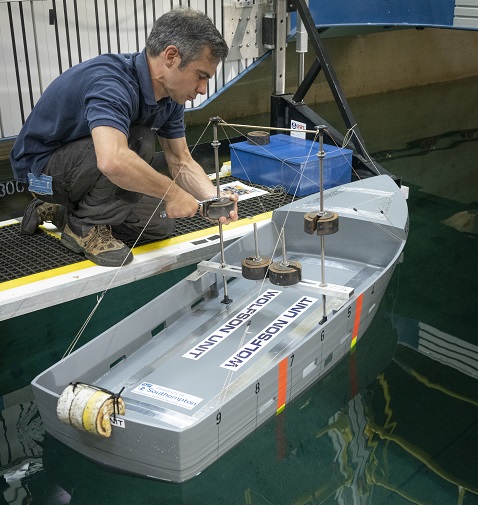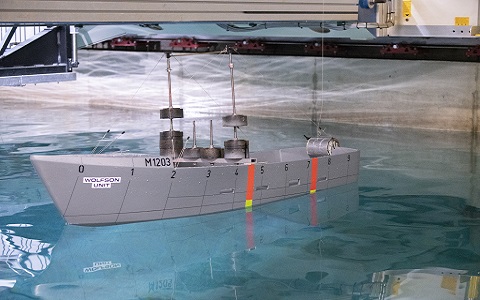New evidence-based recommendations towards safer inshore fishing vessels

Commercial fishing remains the most dangerous peacetime occupation in most countries.
The accident fatality rate in developed countries exceeds 100 fatalities per 100,000 active fishers and is probably even higher in developing countries where no formal accident reporting systems are in place.
Small fishing boats undertake low-impact, environmentally sustainable fishing activities, catching high quality fresh fish daily, but are also the most vulnerable to accidents at sea due to their size relative to the sea state, and are the most likely to capsize due to insufficient stability.

The Wolfson Unit has produced new experimental evidence on the survivability in waves of a typical 10 metre fishing vessel, in relation to stability criteria and guidance presented in the current UK Code of Practice (CoP) for small fishing vessels. A key objective of this study was to establish the level of safety from capsizing enabled by the Wolfson Stability Method over a range of load conditions representing actual fishing operations.

The Wolfson report recommends to evaluate the merit of fitting non-return flaps to the freeing ports of existing low-freeboard fishing boats, to consider replacing the CoP distance-based restrictions with seastate-based guidance according to the Wolfson Method, and to enact alternative arrangements for compliance for selected vessel designs.
The model tests took place in the 138 metre Boldrewood Towing Tank at the University of Southampton. The study was conducted in partnership with the National Federation of Fishermen’s Organisations (NFFO) and Public Policy | Southampton (PPS), with the MCA acting as independent observers. The test vessel was selected in discussion with the Marine Accident Investigation Branch (MAIB).

In January 2024, Matteo Scarponi presented selected elements of this work at the International Fishing Industry Safety & Health Conference (IFISH) hosted at the headquarters of FAO, the Food and Agriculture Organisation of the United Nations. It is hoped that the growing evidence in support of the Wolfson Method, embedded in the UK fishing safety legislation since 2021, will ultimately result in its inclusion in the international safety guidelines for small commercial fishing vessels.
The Royal Institution of Naval Architects (RINA) has recently commented on the report, and the Wolfson Unit has provided RINA with a written response that expands on the test method, results and analysis. It is expected that this discussion will be published in due course as an addendum to the Wolfson report.